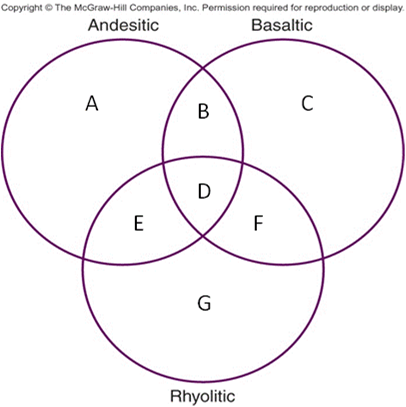Complete the following conversions using exact conversion factors (round your answers to 1 decimal place).
English System Units
(a) 3 inches
(b) 4.3 feet
(c) 18 yards
(d) 73 miles
(e) 6.2 quarts
(f) 10 gallons
(g) 14 ounces
(h) 155 pounds
(i) 47°F
S.I. Units
(a) __________ centimeters
(b) __________ meters
(c) __________ meters
(d) __________ kilometers
(e) __________ liters
(f) __________ liters
(g) __________ grams
(h) __________ kilograms
(i) __________°C
S.I. Units
(a) 7.6 centimeters
(b) 1.3 meters
(c) 16.5 meters
(d) 117.5 kilometers
(e) 5.9 liters
(f) 37.9 liters
(g) 396.9 grams
(h) 70.4 kilograms
(i) 80.3 °C
You might also like to view...
Determine the correct location on the Venn diagram for the following phrase based upon your understanding of volcanoes and volcanic landforms. Magma source rock--continental crust

"Compared to other ground water, the rate of the Cape Cod experiment area, 0.43 meters per day, is probably faster than average." Evaluate this statement
A) This is true. The Cape Cod aquifer is made of relatively porous unconsolidated gravel and sand. B) This is false. Other aquifers might flow as quickly as 0.5 meters per second. C) Aquifer flow cannot be estimated without repeating a similar experiment in other areas. D) This is true. The Cape Cod aquifer has a much steeper slope than average.
Temperature inversions occur when warm air is below cold air
Indicate whether the statement is true or false
Which of the following is the predominant process that forms the thick blanket of sediment on abyssal plains the deep-ocean floor?
A) Black smokers B) Melting icebergs C) Precipitation D) Suspension settling E) Undersea streams